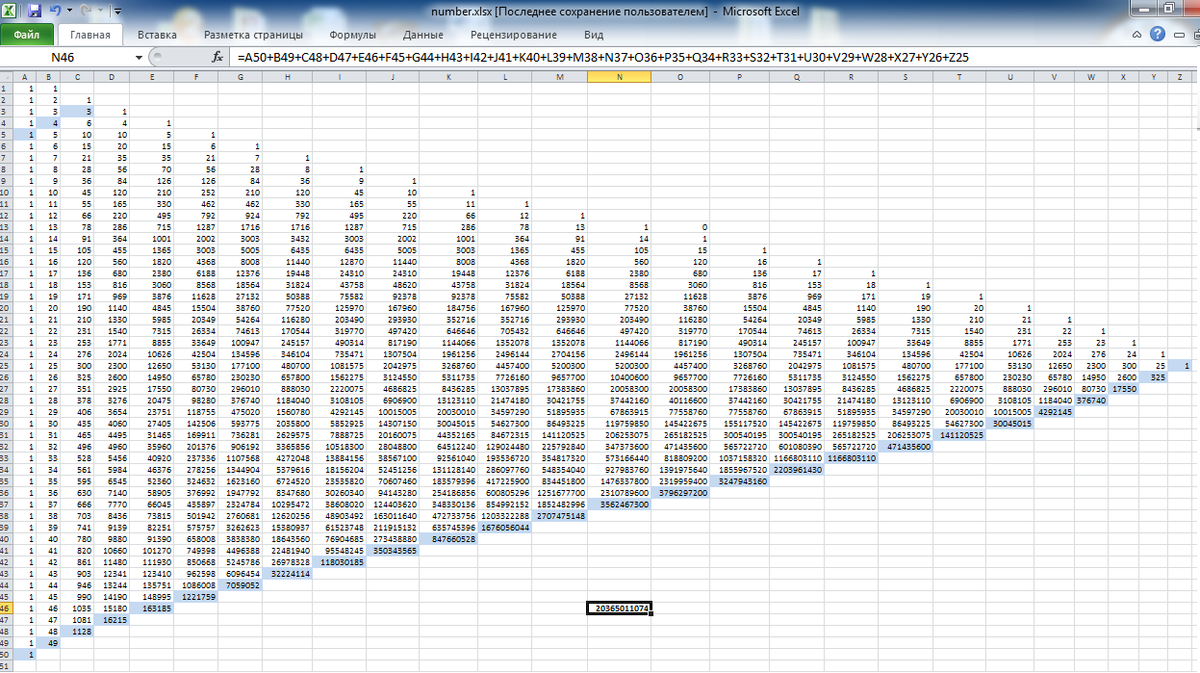Tiling a Grid
There are different ways that and squares can be arranged in a grid:

Find the number of different ways that and squares can be arranged in a grid.
The answer is 20365011074.
This section requires Javascript.
You are seeing this because something didn't load right. We suggest you, (a) try
refreshing the page, (b) enabling javascript if it is disabled on your browser and,
finally, (c)
loading the
non-javascript version of this page
. We're sorry about the hassle.

Let t ( n ) be the number of ways of tiling a 2 × n grid.
Now, all of these tilings have either one 2 × 2 tile or a vertical pair of 1 × 1 tiles at their rightmost position. We see that there must be t ( n − 2 ) of the first type and t ( n − 1 ) of the second. So we have the relationship t ( n ) = t ( n − 1 ) + t ( n − 2 ) (for n > 2 ).
Clearly t ( 1 ) = 1 and t ( 2 ) = 2 , so the t ( n ) are just the Fibonacci numbers.
F 5 0 = 2 0 3 6 5 0 1 1 0 7 4 , so this is the required answer.